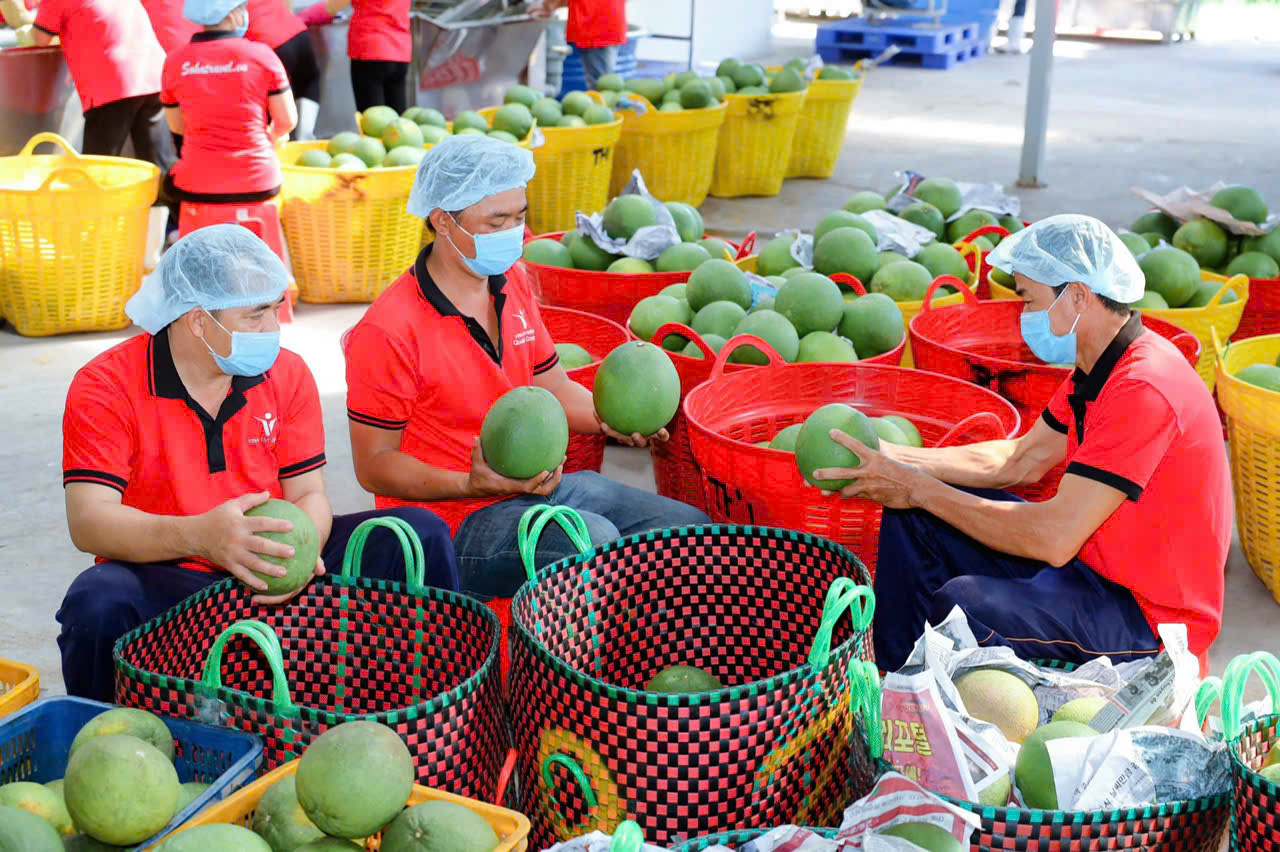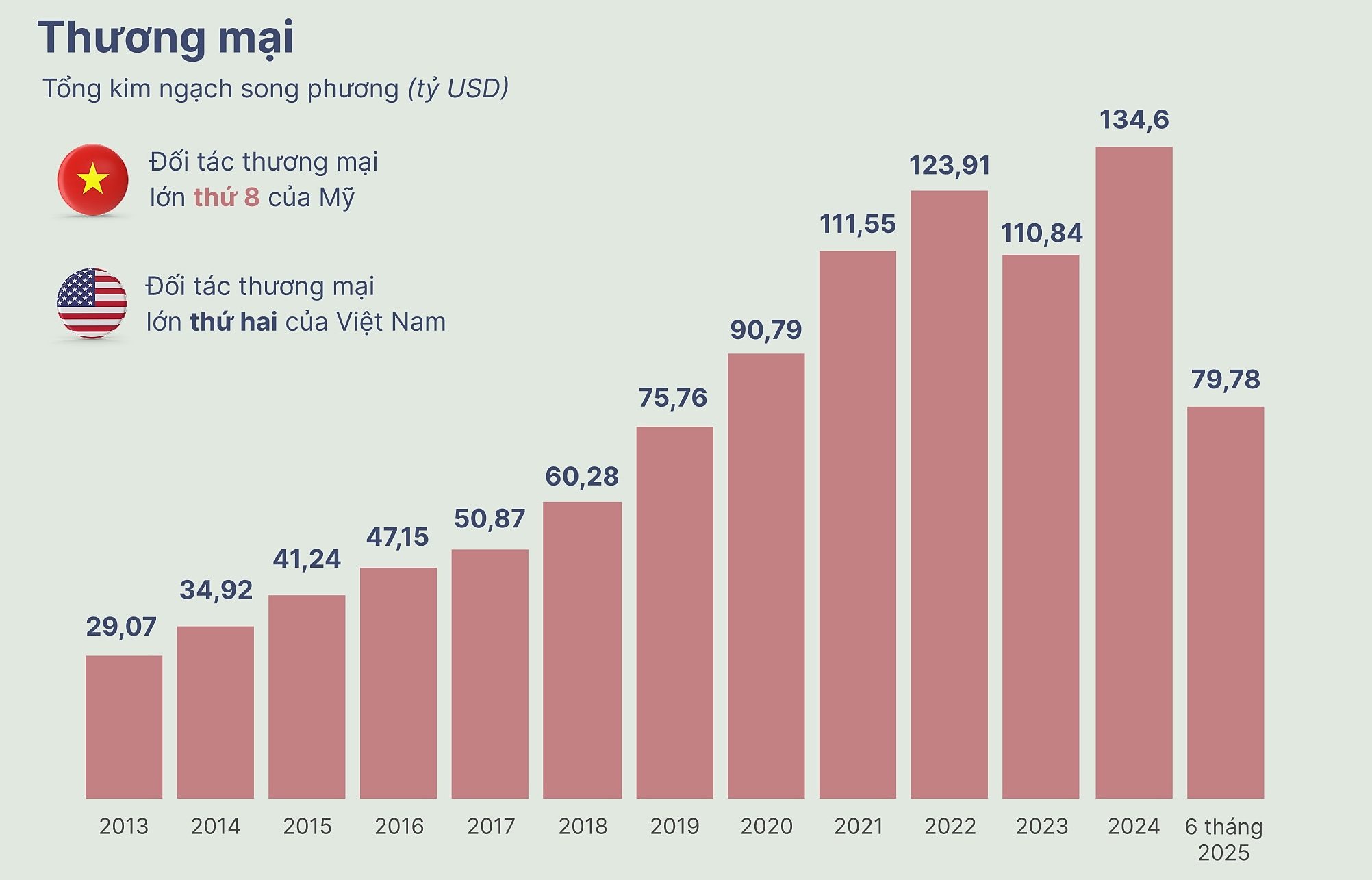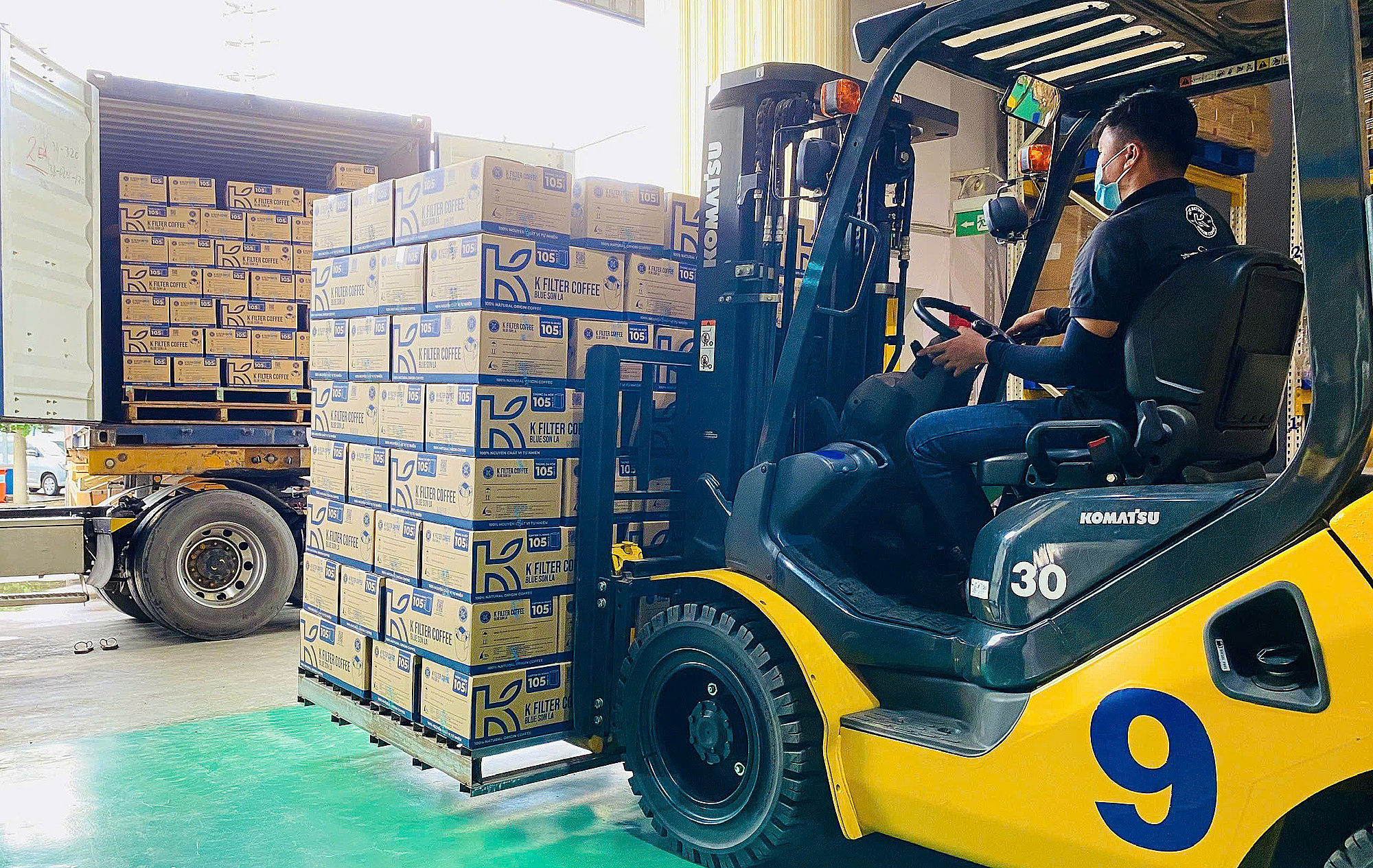In 2008, the first two-ton shipment of Vietnamese dragon fruit arrived in the US by air, marking a significant milestone for the agricultural sector. This was the first time fresh Vietnamese fruit entered the US, demonstrating that domestic farmers could meet the stringent phytosanitary standards of this large and demanding market.
"The transportation costs were very high, but if we hadn't done it, we wouldn't have had a chance," recalled Nguyen Dinh Tung, Chairman of Vina T&T Group, who oversaw the first shipment.
Following this initial success, Vina T&T transitioned to sea freight to reduce costs. However, this also brought setbacks, with fruit spoiling during the month-long journey, leading to returned or discarded shipments. "A spoiled container of dragon fruit was worth 30,000 USD. There were times I thought we'd have to stop," Tung said.
By 2015, after years of experimentation and investment in modern preservation technology, the company gained control over product quality throughout the long journey. From then on, Vina T&T's exports to the US stabilized and became profitable.
Today, Nguyen Dinh Tung's company exports 12 containers weekly to the world's largest economy. They lead in the export value of Vietnamese agricultural products to the US, with seven types of fruit: dragon fruit, longan, rambutan, mango, star apple, coconut, and grapefruit. Last year, Vina T&T's revenue from this market reached 80 million USD, accounting for 60% of their total agricultural export value.
"Delivering fruit halfway around the world while preserving its natural flavor, enticing American consumers to return – that's the achievement of an entire ecosystem, from farmers to preservation technology, standards, and trust," Tung shared.
 |
Vina T&T's packaging factory in Ben Tre. Photo: Vina T&T |
Vina T&T's packaging factory in Ben Tre. Photo: Vina T&T
Phuc Sinh had a smoother start, exporting goods to the US over 22 years ago. "Preparing shipments to the US back then was quick, not requiring too much time or resources," recounted Phan Minh Thong, Chairman of the Board of Phuc Sinh Group.
Phuc Sinh's first product in this market was pepper, around 50 tons. For the next 10 years, they were the largest pepper exporter to the US.
About 20% of Phuc Sinh's export revenue comes from the US market, equivalent to 50-80 million USD annually. Pepper remains their leading product, with coffee accounting for about 7% of revenue, as Washington doesn't import much Vietnamese coffee, sourcing mainly from European countries.
Vietnam and the US established diplomatic relations in 1995, upgrading to a Comprehensive Strategic Partnership in 9/2023. Over the past 30 years, the US has become one of Vietnam's largest export markets, and Vietnam has become the US's 8th largest trading partner.
Bilateral trade has grown impressively, about 300 times – from 450 million USD in 1995 to nearly 150 billion USD today. Beyond agricultural products, Vietnam exports many key goods to the US, such as machinery, electronics, footwear, textiles, and handbags.
 |
Trade between Vietnam and the US over 30 years of diplomatic relations. Graphics: Hoang Khanh |
Trade between Vietnam and the US over 30 years of diplomatic relations. Graphics: Hoang Khanh
Conversely, Vietnam has become an attractive production base and market for US investors. PepsiCo, founded in 1898, is the world's second-largest food, beverage, and snack corporation. The first production line at Suntory PepsiCo's Vietnam factory began operating in 2/1994 – a year before the two countries normalized relations. Over the past 30 years, the corporation has invested nearly 1 billion USD in Vietnam, with seven factories and eight distribution centers, creating over 15,000 jobs.
At a seminar last week commemorating 30 years of Vietnam-US relations, Ashish Joshi, CEO of Suntory PepsiCo Vietnam, stated that their success story has inspired other foreign direct investment enterprises to invest in Vietnam.
"As Vietnam's economy grows rapidly, so does ours. About 90% of our suppliers are domestic companies. All products manufactured by the company in Vietnam are for consumers here," Joshi said.
The US currently ranks 11th among countries and territories with foreign investment in Vietnam. US Ambassador to Vietnam Marc Knapper believes that looking at US companies operating here shows that "everyone is flocking here because they see the importance of Vietnam as a market, a partner, a source of innovation."
"You have 100 million people, most of whom are young, tech-savvy, and highly educated. I think American companies and foreign businesses see the potential and the true quality of the business environment here," Ambassador Knapper said.
Speaking with VnExpress, a representative of the American Chamber of Commerce in Ho Chi Minh City (AmCham) described the trade and investment relationship between the two countries over the past 30 years as "strong, sustainable, and constantly developing." AmCham affirmed that this relationship is based on mutual benefit and long-term commitment, despite existing short-term uncertainties related to tariff policies.
 |
Investment between Vietnam and the US over the past 30 years. Graphics: Hoang Khanh |
Investment between Vietnam and the US over the past 30 years. Graphics: Hoang Khanh
Recently, Vietnam and the US have been negotiating reciprocal tax policies. The two sides have essentially agreed on a Joint Statement on the Framework for a Reciprocal Trade Agreement. Vietnam consistently maintains the view of promoting bilateral economic and trade relations in a fair and balanced manner, with stable and sustainable development, for the benefit of the governments, people, and businesses of both countries.
"Regarding tariff negotiations, I think Vietnam is doing well. We expect and believe the outcome will be positive for both Vietnam and the US," said Dr. Can Van Luc, a member of the Prime Minister's Policy Advisory Council, at last week's seminar.
According to Luc, a positive aspect is that Vietnamese businesses are adapting quickly. They have sought and expanded into new markets and partnerships to diversify input and output, instead of passively waiting for policy and negotiation outcomes. They have also minimized operating costs, restructured, and actively participated in dialogues between the two countries to contribute to ensuring favorable negotiation results.
"The 30-year relationship between the two countries has faced difficulties, but we have overcome them. Therefore, there's no reason why we cannot continue to build on this," Luc added.
 |
Export shipments being packaged at Phuc Sinh's factory. Photo: Phuc Sinh |
Export shipments being packaged at Phuc Sinh's factory. Photo: Phuc Sinh
In reality, US tariff policies have created a cautious sentiment and somewhat affected many businesses. However, with over two decades of experience in this market, Phuc Sinh Chairman Phan Minh Thong concluded that the US is a market that demands "going big." Therefore, businesses wanting to survive must invest in systematic infrastructure and thinking, operating in a way that is compatible with the market's scale.
Furthermore, each state in the US has its own laws, consumer habits, and regulations. Thong advised businesses to understand each market segment and customer. "To win over customers, a 'willing to go' spirit, readiness to learn, confidence, and proactiveness are differentiating factors," he shared.
For US businesses, according to an AmCham survey in June, over a third (36%) of member companies expressed "extreme concern" about tariffs, while 41% were "moderately concerned." Despite this, according to AmCham, most businesses remain confident in near-future growth potential, as Vietnam plays an increasingly important role in the global supply chain. Along with this, the rapid development of the digital economy, domestic consumer demand, and infrastructure investment are positive drivers of domestic growth.
"US tariff uncertainty remains a concern, but AmCham believes the close ties between the two countries will bring stability," said an association representative. They also committed to continuing to support Vietnam's growth and strengthen Vietnam-US economic relations through cooperation, policy dialogue, and joint investment in Vietnam's future development.
PepsiCo is one US investor affirming its confidence in Vietnam's growth and increasing its investment. "Last year, we broke ground on our sixth factory in Long An (now Tay Ninh province). This is our largest investment in Vietnam in 30 years and the most advanced factory in the Asia-Pacific region," said Ashish Joshi.
Ambassador Marc Knapper stated that future investment potential is limitless, and Vietnam continues to be a very attractive place for US businesses to operate. He acknowledged that there are always challenges in trade relationships, but the two sides address them respectfully and frankly.
"This is how friends and partners like the US and Vietnam cooperate. We work together in a way that promotes the interests of both countries," said Ambassador Knapper.
Phuong Dung - Thi Ha - Vien Thong












